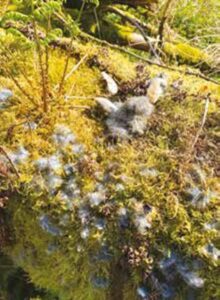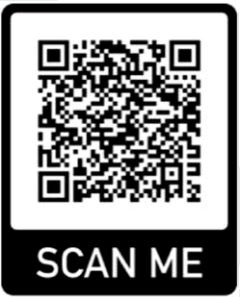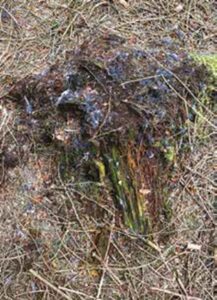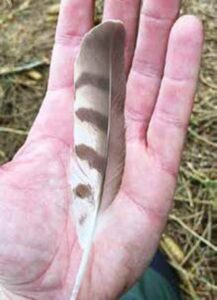Signs should be starting to get more obvious around suspected raptor nests
If during a pre-ops check you find what you suspect is a raptor nest, start the ‘Merlin Bird ID’ app while you are searching, so that should any bird species present begin to alarm call, you can record and ID the species present, but it is worth validating the recording as Merlin doesn’t get everything right.
Then quickly and quietly search around the base of the suspected nest for white droppings, which look like whitewash, there may not be much to begin with but even a small amount is good evidence hatched chicks are present. As the season goes on and hatched chicks grow, they will defecate increasingly out the nest resulting in a halo of whitewash around the base of the nest, getting larger and larger.
You can even spread the search out a little bit wider, as within 50m of the nest there should be plucking posts on top of features such as stumps, fallen trees or root plates. These are essentially a raptors version of a kitchen table where the male will pluck their prey in preparation for taking it to the nest to feed the chicks and the female.
In the case of sparrowhawks, the prey remains are likely to be those of small woodland dwelling birds.
However, goshawk prey remains would comprise of larger species such as corvids and wood pigeon.
Likewise, a buzzard pluck nearby would mostly comprise of parts of rabbit and can be difficult to find. Between the nest and these plucking posts, you may also find raptor feathers as they will moult these during the breeding season, and will occasionally drop them as they fly to and from the nest.
If you believe you have a raptor nest, it is important to discuss it with your local Ecology Lead or one of the Tilhill Ecologists to ensure the correct buffers are implemented at the right time of year to ensure breeding attempts are allowed to continue successfully. Tilhill’s Guidance Note 73 ‘Finding and Protecting Raptor Nests in Woodland’ is an excellent starting point.
This is available to our approved contractors through the contractor portal
Suggested buffer distances based on research can be found on the NatureScot Website by scanning the QR code. These are best practice and are recommended in England, Scotland and Wales.







